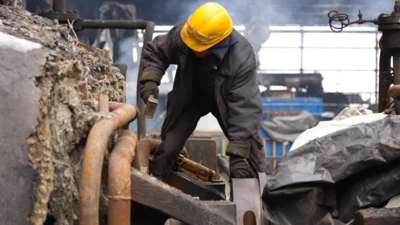We've updated our Privacy and Cookies Policy
We've made some important changes to our Privacy and Cookies Policy and we want you to know what this means for you and your data.
Reality Check: How has public sector pay changed?
Top Stories
- Author, Anthony Reuben
- Role, Head of statistics, ґуПуґ«ГЅ News
Liberal Democrat leader Nick Clegg has been talking about public sector pay.
He has said that pay should rise at least by inflation for the two years from 2016 and then above inflation once the deficit has been dealt with.
He is talking about inflation measured by the consumer prices index (CPI), which currently stands at zero, making it a relatively easy pledge to make.
The rises would be based on the CPI figure from the previous September. The Office for Budget Responsibility is predicting an inflation rate for the whole of 2015 of 0.2% followed by 1.2% in 2016, returning gradually to the Bank of England's central target rate of 2.0% by 2019.
Top Stories
Bear in mind that these are forecasts, and so are pretty uncertain. They are especially vulnerable to a resurgence in oil prices.
But how does that compare with what has been happening to ?
Public sector pay was frozen for 2011 and 2012, the first two years of this parliament, followed by two years at 1%. This March it was raised by up to 1%, with schools entitled to give top-performing teachers a rise of up to 2%.
With the exception of the change this March, it means that public sector pay for many individuals has been lagging behind inflation.
Figures for what has been going on with public sector pay overall are somewhat problematic. These figures are taken from the Office for National Statistics' Annual Survey of Hours and Earnings (Ashe), which is a survey of employers.
The lines have been blurring between the public and private sectors, as successive governments have contracted out services such as cleaning and catering. It means a job such as working in the canteen in a government building, which you might think of as public sector, may actually count as private sector.
The transfer of all of these lower-paid jobs from the public sector to the private would be expected to have reduced average earnings in the private sector and increased it in the public sector, which makes comparisons of either sector over time a bit suspect.
Overall, public sector earnings went up by 1.6% in 2011 when they were meant to be frozen and 1.9% in 2013 when they were supposed to be capped at 1%.
This may be partly as a result of people being promoted or seeing their pay rise for reasons other than the overall rise in public sector pay, but it may also be due to the other factors mentioned that skew the figures.
For workers in the public sector, guaranteed protection against inflation would certainly be welcome, even if it is only in the last five years that they stopped assuming they had protection.
Top Stories
Election 2015 - Reality Check
What's the truth behind the politicians' claims on the campaign trail? Our experts investigate the facts, and wider stories, behind the soundbites.
Read latest updates or follow us on Twitter
Note: This article was amended on 22 April because an earlier version said that Ashe was a survey of workers when it is in fact a survey of employers.
Top Stories
More to explore
Most read
Content is not available








